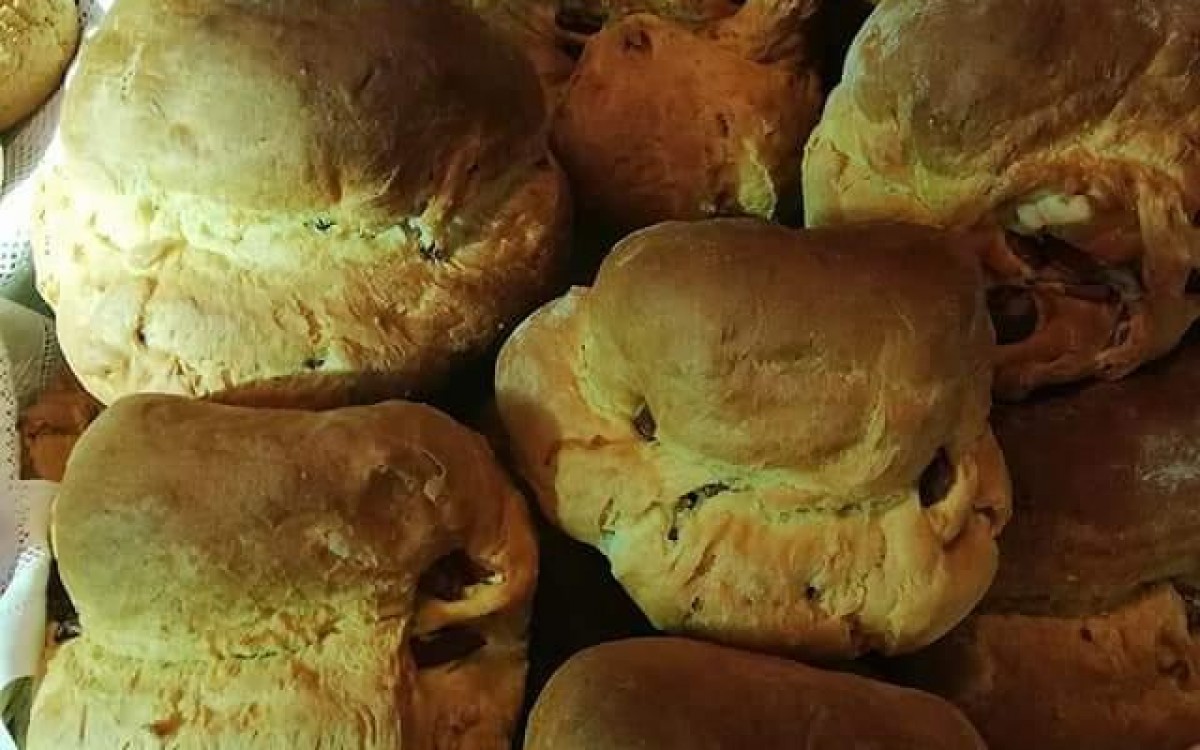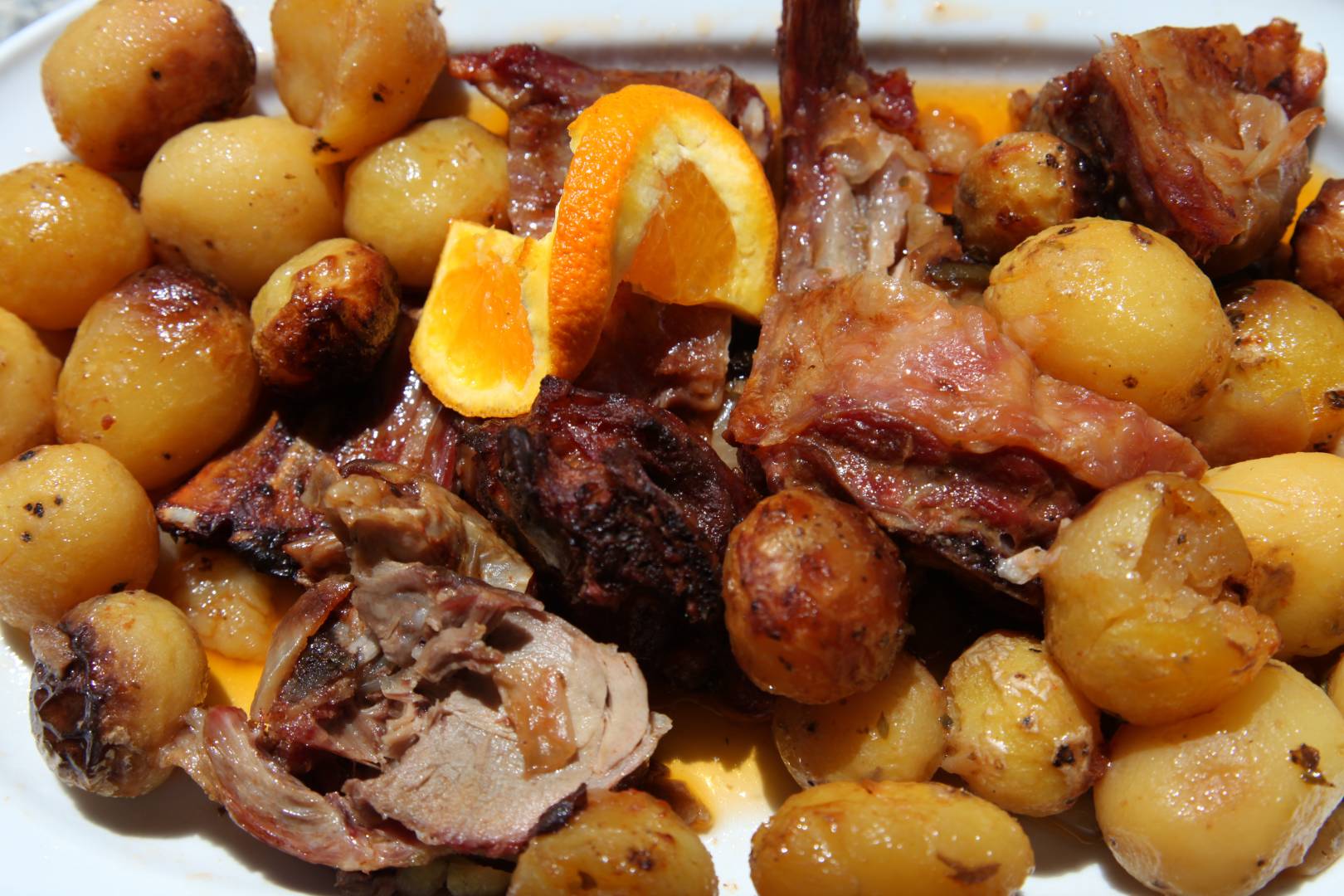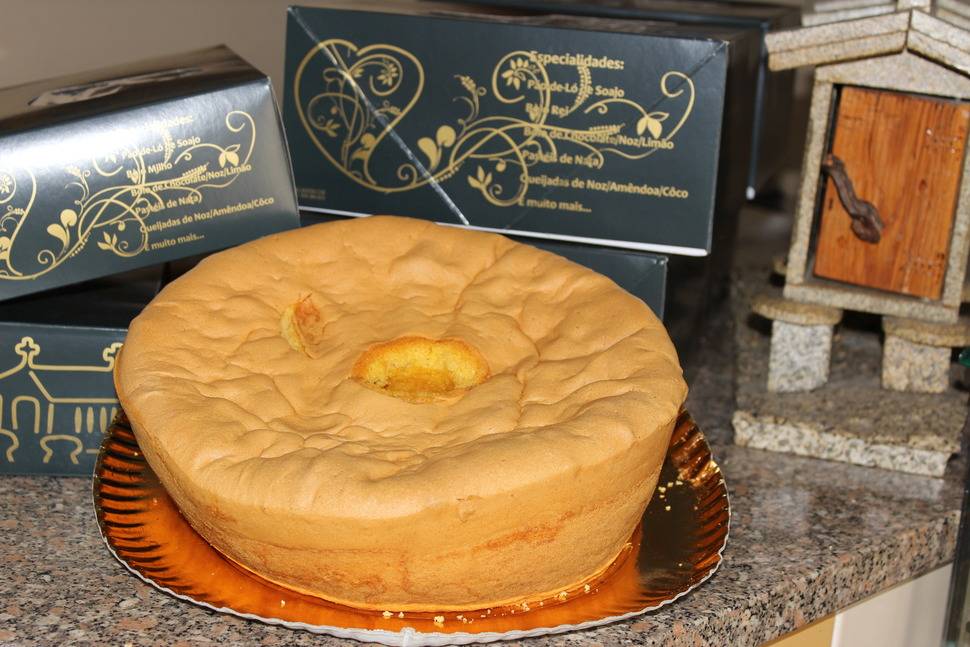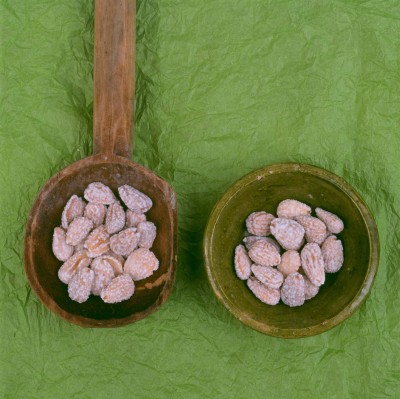Easter: Portuguese Recipes to Make at Home
This is the ideal year to have a homemade Easter. All About Portugal helps you with delicious recipes to put into practice!
With strong centuries-old traditions, Easter is celebrated differently from region to region, but always with something in common: the importance of the gastronomic component, with all its flavours and colours. Easter marks the end of the Lenten fast and, therefore, meat makes its triumphant return to Portuguese tables, bringing along traditional seasonal desserts and sweets, such as Pão de Ló, Folar Doce, Almonds and chocolate Eggs. All About Portugal presents a selection of recipes that you can make at home.
Folar de Chaves

Indispensable at the table, either in its sweet or savoury version, the Folar de Carne is undoubtedly a favourite in the Trás-os-Montes region. Made with eggs, olive oil and a variety of smoked meats, this delight is to die for.
Ingredients:
1kg of unleavened wheat flour
12 eggs
150g of lard
100g of butter
15cl of olive oil
25g of baker's yeast
250g of ham
1 salpicão
2 linguiças
Water q.s.
Preparation:
Put the flour in a bowl, make a hole in the centre and add the yeast after being dissolved in a bit of warm water. Add the eggs, after being rinsed with hot water, add the slightly heated fats, and knead the dough until it is smooth and soft. Sprinkle with flour and cover with a thick, warm cloth, letting it rest until the dough doubles in volume. Then, divide it into two equal parts, stretching and shaping each with your hands. On the first half, distribute the meat (previously cut into slices). The other half of the dough is placed on top, joining the ends and giving it a rounded shape. Let it rest for half an hour, with a cloth around it. Brush with beaten egg yolk and bake on high temperature.
"Roasted Kid" in the Oven

Moving on to the main dishes, Roasted Kid (cabrito assado) is the preferred choice and is usually served at Easter Sunday lunch. There are dozens of recipes for its preparation, varying from region to region.
Ingredients:
1 kid (cabrito)
2 bulbs of garlic
2 onions
Sweet paprika
5 cloves
Bay leaves
Parsley
1l of white wine
Bacon chips
Olive oil
Preparation:
A porridge is made the day before with crushed garlic, salt and sweet paprika. Grease over the kid with this porridge. The next day, cover the bottom of a roasting pan with sliced onions and place the kid on top. Season with wine and add the remaining ingredients. Cover the kid with the bacon chips and bake it, preferably in a wood oven. Serve with roasted potatoes.
Lamb Stew

Another main dish of this season is the Lamb, whether stuffed, stewed or simply roasted. Lamb meat, tender and succulent, is one of the most produced meats in Alentejo, where the magnificent Lamb Stew is served, accompanied by bread cut into thin slices.
Ingredients:
1kg of lamb meat
500g of onions
2 tbsp. of flour
200g of lard
5 garlic cloves
1 bay leaf
1 tbsp. of freshly ground peppercorns
1 tsp. of sweet paprika
1 tip of chili pepper
1kg of bread
Salt q.s.
Preparation:
After cutting the lamb meat into pieces, sprinkle it with flour and place it in a pan greased with lard, letting it sear in the oven. A sauté is prepared separately with lard, chopped onions, garlic, bay leaf and peppercorns. Add some water and the already tender meat to the sauté. In a terrine, place the homemade bread cut into slices, on which the stew is poured. Serve the lamb meat on a separate platter.
Chanfana

Made with Old Goat Meat and roasted inside the traditional black clay pots from Olho Marinho, the chanfana is one of the most typical and famous dishes of Beira Litoral, particularly at Easter.
Ingredients:
Old goat
Red wine
Brandy
Rosemary
Garlic
Olive oil
Onions
Cloves
Salt
Parsley
Preparation:
The old goat meat is prepared in advance, marinating overnight. When it comes time to cook it, sauté a chopped onion in a pan letting it sear. Add the marinated goat meat, the cloves, bay leaves and rosemary and let the mixture simmer. Halfway through cooking, pour a glass of brandy, cover the pan, and let simmer for another 5 or 6 hours, until fully cooked. Serve with turnip greens or other cooked green vegetables and boiled potatoes as side dishes.
Easter Folar

Easter would not be Easter without Folar Doce. Traditionally made all over the country with whole eggs, it is characterized by its slight taste of cinnamon. In the Algarve, it has the particularity of being seasoned also with fennel, which gives it a unique flavour.
Ingredients:
15g of baker's yeast
0.3dl of warm water
500g of wheat flour
1dl of cold water
Cinnamon powder q.s.
Fennel powder q.s.
1 tsp. of salt
90g of sugar
3 eggs
5 tbsp. of olive oil
0.3dl of white brandy
1 large orange
0.2dl of Port wine
1 egg to brush
Preparation:
Firstly, dissolve the yeast in warm water, add 100g of flour and let it rest until overnight. In a saucepan, mix cold water, cinnamon, fennel, salt and sugar (reserve a little to sprinkle). Bring to a simmer, let it cool and add to the leavened yeast preparation. Beat the eggs, divide into 2 parts and add to the dough separately. Add olive oil, brandy, Port wine and orange zest. Add the remaining flour and knead vigorously until the dough no longer sticks to the hands and board. Form a round ball, sprinkle with a little flour and let it rise, covered with a cloth in a warm place, until it doubles in volume. Preheat the oven to 180ºC. Divide the dough into 3 parts, form thin rolls and then braid them. Place the folar on a tray lined with parchment paper, brush with the previously beaten egg, sprinkle with sugar and let it rise for another 30 minutes. Bake for 40 minutes.
Pão de Ló

This fluffy sponge cake, with a delicate flavour as tradition dictates, must be baked in a wood oven in unglazed clay forms. The most famous ones are the Pão de ló de Ovar, Pão de ló de Margaride's and Pão de ló de Alfeizerão's. We suggest this original recipe.
Ingredients:
10 egg yolks
5 whole eggs
300g of sugar
200g of flour
Preparation:
Pour the eggs and yolks in a bowl, add the sugar and beat the batter for at least 20 minutes. Add the sifted flour while mixing everything with a wooden spoon. Pour the preparation in the previously prepared form, cover with a bowl and cook in a pre-heated oven, at 225ºC, for approximately 45 minutes. Remove from the oven and let cool covered with the bowl. Bon appétit.
Homemade Almonds

Almonds, along with Chocolate Eggs, are one of the classic sweets of the season. Chocolate-covered, with sugar, liquor, or cinnamon... the possibilities are endless. We leave you with the recipe for homemade almonds with cinnamon.
Ingredients:
200g of peeled almond
200g of sugar
50ml of water
100g chocolate powder
1 tsp. of cinnamon powder
Vanilla essence and sugar q.s.
Preparation:
Toast the almond kernels and let them cool down. Add the sugar to the water, remove lumps, and let it dissolve, before bringing the mixture to a simmer. As the sugar starts to caramelize, add the chocolate, cinnamon, vanilla essence and almonds to the preparation. Cook until you reach a sweet spot: when you pour a little sugar syrup into a bowl of cold water, a consistent, mouldable ball is immediately formed. Pour the preparation on a damp work surface. With a wet spatula, quickly remove the almonds, pass them through sugar and allow them to cool. A tasty, delicious recipe for tasty, delicious almonds.
Recommended
